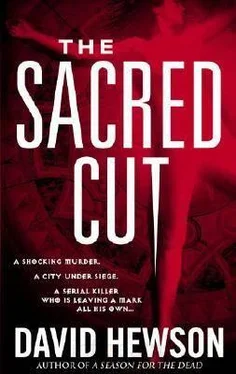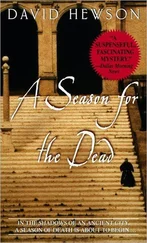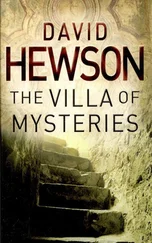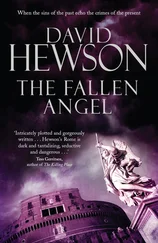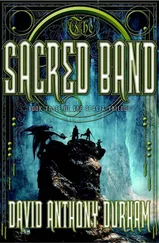“This is what’s called the sacred cut,” she told them. “With the first couple of victims you can even see the marks he used to align it properly.”
She pulled up two morgue shots, early versions of the shape. “If you look closely, you can see he drew a couple of lines in felt-tip to help him get the hang of things. The other pointer to suggest a link is the way he alternates the position of the limbs. This is a direct reference to the Vitruvian Man. A naked man, arms and legs outstretched, vertical and horizontal. Drawn within both a square and a circle. It’s the same concept.”
She exchanged a brief glance with Costa. He understood the prompt.
“Like the body in the Pantheon,” he said. “I get it.”
“Good for you,” Leapman muttered, making a point of looking at his watch. “So, Agent Deacon. You’re the architect here. What does it mean?”
“I have a degree in architecture,” she replied. “It doesn’t make me an expert.” She struggled to form the right answer, then looked at each of them in turn, as if to make sure they understood: she wasn’t too sure of all this herself. “On one level it’s a construct used to explain the geometry behind ancient architecture. On another it’s a metaphor for perfection, kind of a mystical symbol. It’s supposed to represent a faultless union between the physical world and the spiritual one. Remember the way the body was laid out in the Pantheon?”
She sketched out a copy of the familiar da Vinci sketch, rapidly and with some skill. “The Greeks were the first to set down in writing the idea that great buildings depended upon precise geometric proportions, though they probably stole it from Asia and the Middle East because you see the same theory in earlier buildings there. The Romans picked up the belief that those proportions came directly from the Gods through the shape of a human being. Vitruvius was a soldier under Julius Caesar before he became an architect. He wrote ten books that became the bible on the subject. They got lost for some centuries, until the Renaissance, when Vitruvius again became the primary source for most of the architects we respect today. Michelangelo drew Vitruvian bodies constantly, with limbs in both positions along the perimeter, trying to get inside the idea, and he wasn’t the only one.”
Emily Deacon placed both drawings side by side on the desk. “Vitruvius used the human body-a holy vessel as far as he was concerned-as the starting point for the proportions needed to create the perfect building.”
Her slim fingers traced the outlines of the shapes. “The Vitruvian Man squares the circle, just as the making of the sacred cut does. This had a religious importance. It symbolized the marriage of the earthly, the physical fact of the square, with the ineffable perfection of the celestial, the circle. It was about…” She looked across at Leapman, who was beginning to get restless with the explanations. “Finding some kind of truth, God even, inside a shape. The shape of a human body. The shape of a building. The proportions are the same. Look at these.”
She indicated the outlines of the sacred cut. “There you have just about every shape and proportion you are going to find in a great building. Even the rectangles the cut creates fit a classically correct, arithmetic rule an architect calls the golden mean. It’s the way things are meant to be.”
Costa tried to remember some of his old art lessons. They’d talked about the golden mean. It permeated everything: architecture, sculpture, painting, mathematics, even music.
Deacon wasn’t done. “When this man, whoever he is, places a body in the centre of the Pantheon, or a place like it, what he’s doing is making some kind of statement. Laying down a piece in a puzzle, trying to complete the picture. The Pantheon is simply a larger version of the geometric pattern he’s describing with those dead limbs. A circle cut by a square. The woman lay where Hadrian must have once stood himself, looking out from the focus of an artificial cosmos, through the eye of the oculus, out to what he regarded as heaven. She was at the epicentre of this structured view of the universe he created. Equally, the real universe was looking back at her. Whoever this man is, he knows all this. He’s not just some… nut.”
“Really?” Leapman sighed. “So where does this get us? Profiling has got us nowhere so far.”
“I don’t know yet,” she half snapped in reply. “Maybe it makes him feel he’s holy somehow. Maybe he’s looking for something, trying to get order back into his world. But we’ve no data, so it’s just guesswork. There’s a missing piece here. This man is smart, educated and very, very capable. Something started him on this path. If we could find out what that is-”
“But we haven’t,” Leapman interruped. “And the odds are we won’t. Why do we keep going over this? I don’t want to understand the bastard. I want to catch him. This guy’s killed at least eight people now, maybe more. All Americans. If we get the chance to ask him why once he’s in jail, fine. But I’m not going to lose any sleep if he’s just plain dead either. We’re not going to nail down this animal by profiling or mumbo jumbo. We get him through work.”
He glared across the desk at Falcone. “If we’re lucky, we get him through you.”
A hint of a smile crossed the inspector’s face. “I’m not a great believer in luck, Agent Leapman. And by the way, it’s nine victims. We lost a photographer last night, if you recall. He was Italian, but all the same.”
Leapman cursed under his breath, then glowered at the images of the dead, scarred backs.
“I do believe in detail, though,” Falcone continued. “Why don’t you just turn over everything you have and let us go through the material to see if there’s anything you’ve missed?”
“We don’t miss things,” Leapman snarled.
“Let me rephrase,” Falcone said, correcting himself carefully. “Perhaps there’s a fact, an event in there that means something to us and nothing to you.”
To Costa’s surprise, Leapman didn’t throw the idea straight out of the window into the snow. “It’s got to work both ways,” he said eventually.
“Meaning?” Falcone wondered.
“Meaning a quid pro quo. Deacon works with you from now on. She reports back to me on what you find. In return, you get some files and she fills me in on anything you discover.”
The woman looked up from the desk, her face suffused with sudden anger. “Sir-”
Leapman interrupted, waving a dismissive hand in her direction. “I can spare you. Saves me hearing all this shit about profiling and numbers and stuff.”
Falcone nodded and smiled at her. “Agreed,” he said. “Welcome on board.”
Leapman dragged the keyboard of his PC towards him. “I’ll e-mail you some documents. Let me say this again: these are confidential. If you copy them outside the loop to anyone else, we’ll know and I will personally drag your ass to the Palazzo Chigi for a serious kicking. If I see them reported in the press you’ll be writing parking tickets in Naples before the week’s out.”
“You seem to have such influence,” Falcone said with a faint smile.
“If you like,” Leapman replied, “you can test me.”
“No,” Falcone demurred. “But you could tell me one more thing.”
“What’s that?” Leapman answered without looking up.
“How long you’ve been here in Rome, waiting for this man to turn up. How he sent you here in the first place. And-”
Falcone reached over and pushed the keyboard out of Leapman’s reach, making sure the American had to look him in the face.
“-why the hell we had to wait for two people to die before you got around to telling us we had this monster on our streets.”
Читать дальше
